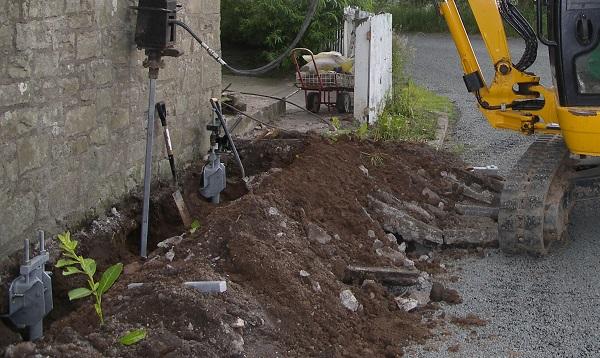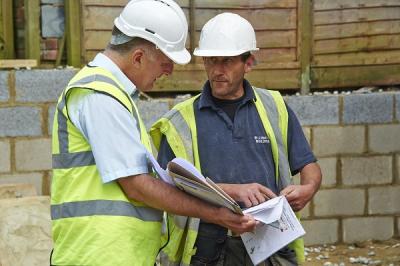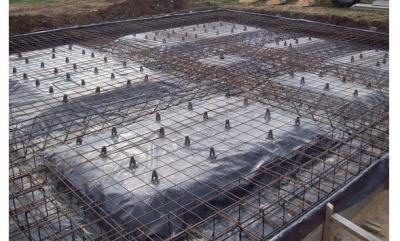Helical Piling System
Helical Piles are steel shafts with a series of low-pitched circular steel helical plates welded at strategic positions along the shaft. The plates give the foundation both tension and compression-bearing capacity, which enables them to be used for a wide range of applications across many industries and sectors. The pile shaft transfers a structure's load into the pile.
Helical steel plates are welded to the pile shaft in accordance with the intended ground conditions. Helices can be press-formed to a specified pitch or simply consist of flat plates welded at a specified pitch to the pile's shaft.
The piles can be used in new build projects, extensions, and underpinning. The precise number of helices, their diameters, and position on the pile shaft as well as steel plate thickness are all determined by a combination of:
- The combined structure design load requirement
- The geotechnical parameters
- Environmental corrosion parameters
- The minimum design life of the structure being supported or restrained.
Sub Surface Technologies’s A B CHANCE Piling System, which has LABC Registered Details certification, is ideal for a wide range of commercial, industrial, institutional, and residential applications, including new and remedial home and commercial structures and soil retention.
If you wish to use the A B CHANCE Piling System on a particular project, be aware that the system will have to be chosen by a design structural engineer and structural calculations/design will still be needed for each individual project. Visit www.abchance.com for more information.
LABC Registered Details, now known as LABC Assured (as of March 2019), is a one-off certification process proving compliance with building regulations and standards across England, Wales & Scotland. Registering your product, system or house type with LABC increases industry confidence while also raising the profile of your company.
Please Note: Every care was taken to ensure the information was correct at the time of publication. Any written guidance provided does not replace the user’s professional judgement. It is the responsibility of the dutyholder or person carrying out the work to ensure compliance with relevant building regulations or applicable technical standards.
Sign up to the building bulletin newsletter
Over 48,000 construction professionals have already signed up for the LABC Building Bulletin.
Join them and receive useful tips, practical technical information and industry news by email once every 6 weeks.
Subscribe to the Building Bulletin




Comments
Add new comment